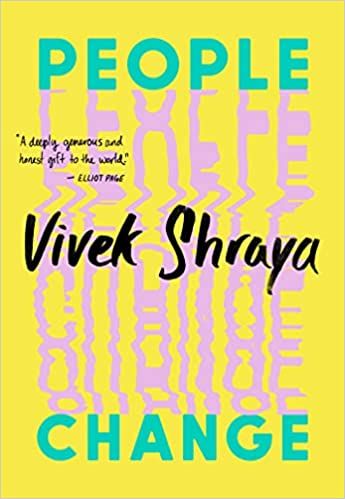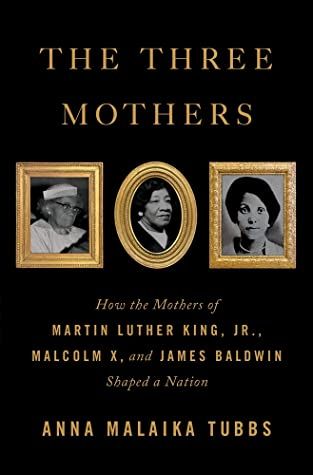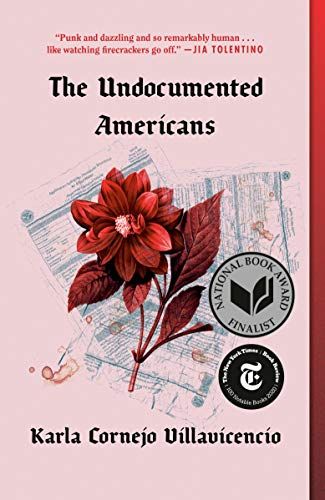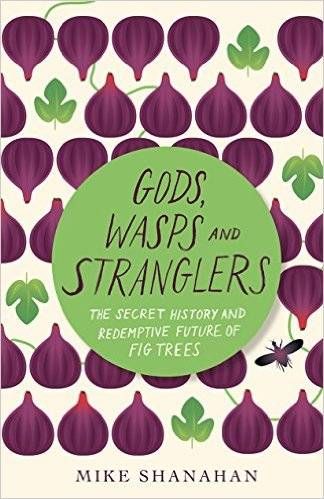I wasn’t used to reading non-fiction at all. Five years ago, if I read a non-fiction book in a year, it was a miracle. These days, I can’t get enough. I read everything: memoirs, history, collections of essays, bizarre hybrid non-fiction works that don’t fit into specific categories, books on politics, science and nature, biographies. I attribute this change in my reading to two things: audiobooks and comics. When I started reading in different formats, whole new worlds of books opened up to me. I always find it difficult to skim through long printed non-fiction books. But I swallow them in audio.
I feel the same way about non-fiction comics. Some documents are simply difficult to obtain in printed form. Non-fiction can be dense and intense. There’s a lot of information to take in. My brain is not always ready. But reading comics requires a different muscle. It’s a different way to enter. With comics, I absorb information in more than one way: I read the text, but I also watch the art. Something in the combo makes it easier for me to tackle difficult topics.
Fortunately, there are many wonderful works of graphic non-fiction out there. But that doesn’t mean I can’t dream up other non-fiction books that I’d love to see adapted into comics. When it comes to books, more is always better. Why can’t we have print, digital, audio, graphic, YA versions of every book? More formats means more people accessing the work. I bet everything.
So listen up, editors: here are the ten best books on my nonfiction graphic adaptation wishlist.
From South to America by Imani Perry
This beautiful book is a mix of memoir, history, analysis, travel writing, journalism, and more. Perry travels all over the South, talking to different people and exploring the culture, art, politics, language, geography, ecology and legacies of this complicated region so central to American mythology. I can already see how beautiful this book would be in graphic form. Perhaps a different artist from the south could illustrate each section, further reflecting the diverse voices present in the book.

People change by Vivek Shraya
This is a short and powerful book about change, identity and transformation. Shraya examines change from different angles, writing about its connection to gender, relationships, homosexuality, artistic creation, and more. A book about the possibilities of continuous transformation seems like it was made to be turned into a graphic version of itself. And since Shraya is an artist, I’m sure the end result would be spectacular!

The Three Mothers by Anna Malaika Tubbs
Martin Luther King, Jr., James Baldwin and Malcolm X are household names – but what do you know of their mothers? In this triple biography, Tubbs tells the stories of these three remarkable women, whose lives deserve to be celebrated in their own right, and not just because of their sons. It’s the kind of story that I think translates well into graphic form – it’s basically three life stories. And it’s also the kind of important story that should be made accessible to as many people as possible — the more forms it takes, the better!

Hello grandpa! by John Paul Brammer
The warm, funny, and compassionate voice of John Paul Brammer shines through in this collection of essays on romance, family, cultural and racial identity, coming out, breakups, fashion, and more. Its mix of personal stories and practical advice would make such a fun graphic novel. I would love to read it alongside S. Bear Bergman Special Topics in Being Human. We need more gay-centric advice books!

Gather moss by Robin Wall Kimmerer
Now that I’ve imagined this book in graphic form, I can’t get the image out of my head. It’s a great read – Kimmerer’s work is always beautiful – all about foam. Kimmerer discusses the biology and ecology of moss, but she also shares the many stories and lessons moss has to teach us. I can already see all the art that could go into a graphic version of this, a combination of scientific illustrations and moss drawings that capture its wonder and mystery.

Undocumented Americans by Karla Cornejo Villavicencio
Interview collections often make fantastic graphic non-fiction, and that’s essentially what this book is about. Traveling from New York to Miami to Flint, Michigan, Villavicencio speaks with undocumented people across the country about their lives and experiences. Throughout, she shares her own family’s story, and the result is a powerful book about immigration, identity, and what it means to belong.

The sound of a wild snail eating by Elisabeth Tova Bailey
These calm and beautiful memoirs are Bailey’s account of a year of chronic illness, most of which she spent in bed. When a friend brings her a snail in a small terrarium, she becomes fascinated by its behavior and begins to observe it very closely. His observations are accompanied by a fascinating exploration of the history and biology of snails. It’s a book about attention, slowing down and careful observation. I imagine a thick book, with only a few words from Bailey on each page to accompany detailed drawings of the snail she befriends.

Poor by Ijeoma Oluo
I admit it might be difficult to adapt, since it contains so much information. Oluo examines the history of male power in America, revealing how this power is embedded in all aspects of American society. It is brilliant, far-reaching, meticulously researched work touching on education, media representation, politics, business, sports and much more. More than almost any other non-fiction book, this is the one I want to get into everyone’s hands. And that’s why I’d love to see it adapted: so I can get it into the hands of even more people!

ace by Angela Chen
This is another wonderful book full of information, but I would still like to see a graphic version. It’s an accessible introduction to asexuality, a mix of academic analysis and personal stories about Chen’s own experiences as an ace woman. She writes about sex, desire, intimacy, attraction, gender, and homosexuality through an asexual lens, reframing the conversation about sexuality. The book also includes interviews with aces of many genders, ages, races, and sexualities. I’m sure someone could turn this brilliant book into an equally brilliant graphic book!

Gods, wasps and stranglers by Mike Shanahan
This charming little book is full of fascinating stories about the history, biology and cultural significance of fig trees. Fig trees are amazing on their own, but Shanahan dives deep into ecology, conservation, culture, religion, botany, mythology, politics to explore just how amazing and unique this species is. This book cries out for a graphic adaptation – I’d buy it for the art alone.
If you’re itching to dive into non-fiction comics that already exist, fear not: there are so many awesome ones out there! To get started, check out these 2021 nonfiction comics, YA nonfiction comics, queer nonfiction comics, and moving graphic memoirs.






